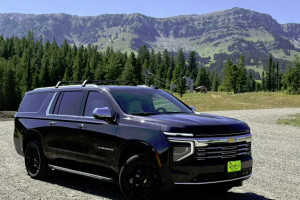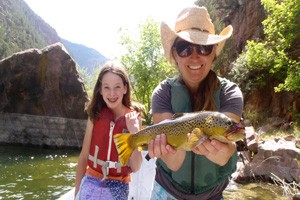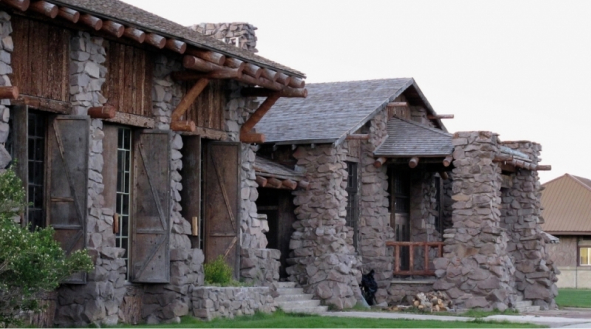Yellowstone National Park regulates and manages fishing access within the park to protect natural resources, native species and outstanding scenery, preserving it so that visitors can continue to enjoy the area for many years to come.
Fishing Season:
The fishing season within Yellowstone National Park is typically open from the Saturday of Memorial Day weekend through the first Sunday of November. Anglers are welcome to fish the waters of Yellowstone during this time from sunrise to sunset. Please note that different rules and regulations may apply to certain rivers and waterways within the park.
Permits and Fees:
All anglers, 16 years of age and older, are required to be in possession of a Yellowstone National Park fishing permit at all times. Children, age 15 and younger, can either obtain a free permit or fish without a permit as long as under direct supervision of an adult with a permit.
All vessels, including float tubes, must have a permit within Yellowstone National Park.
Fishing and boat permits are available at ranger stations and visitor centers throughout the park as well as on Recreation.Gov website
- 3-day: $40
- 7-day: $55
- Season: $75
Fish Species and Regulations:
It is the responsibility of the angler to be able to identify the different fish species and to have an effective way of measuring caught fish. Different limits on size and possession apply to each fish species. In general:
- Native fish species (including Cutthroat Trout, Grayling, and Montana Whitefish) are Catch and Release Only!
- Non-native fish species (including Rainbow Trout, Brook Trout, Brown Trout, and Lake Trout) are limited to 5 per day.
- Lake Trout caught from Yellowstone Lake must be killed.
- See the Park's Photo Identification Chart.
Closed Areas:
Yellowstone National Park is broken up into different fish management areas in order to regulate fishing.
The Native Trout Conservation Area encompasses a majority of the park, where native fish species are regulated. The Wild Trout Enhancement Area encompasses Madison River (but not Hebgen Lake) and the Lewis River above Lewis River Falls, where native species as well as Rainbow and Brown Trout species are regulated.
The following areas are permanently closed to fishing:
- Fishing Bridge and an area one mile downstream (toward Canyon) and one-quarter mile upstream (toward Yellowstone Lake) from the bridge.
- The Yellowstone River for 100 yards up and downstream of LeHardys Rapids.
- The entire west channel of the Yellowstone River near the road at Nez Perce Ford.
- The Yellowstone River and its tributaries through Hayden Valley from the confluence of Alum Creek upstream (toward Yellowstone Lake) to Sulphur Caldron.
- Pelican Creek and its tributaries.
- The shoreline of Yellowstone Lake from West Thumb Geyser basin to Little Thumb Creek (to protect fragile thermal resources).
- Bridge Bay Marina/Harbor & Grant Village Marina/Harbor and their channels to the lake.
Below are just a few of the many great places to cast your line in Yellowstone.
- Firehole River: The turnoff onto the Firehole Lake Drive is only eight miles North of Old Faithful and is one of the best ways to easily access at least a five-mile stretch of the River.
- Gibbon River: The section of the Gibbon River above Norris Junction can be accessed at several places along the Norris-Canyon Road. Various meadow sections along the Gibbon River make it easily accessible.
- Fall River: To reach the river inside the park, you must hike. The Fall River is accessible from the Ashton-Flagg Ranch Road that intersects Highway #20 near Ashton, Idaho. The Fall River Campground lies just outside the park. The road continues to the Cave Falls Trailhead. From there you can hike up the river for almost a half-mile but to continue, you must ford the Belcher River. This cannot be safely done if the water is high.
- Backcountry Fishing: Try Slough Creek, Grebe lake, and the Upper Falls River.
Rules and Regulations:
- Non-Lead Tackle Only: Use of lead fishing tackle is prohibited.
- Clean Gear: To prevent the spread of invasive species, all fishing gear must be thoroughly cleaned before entering and after exiting all Yellowstone waters.
- Rules and Regulations: Know and understand all Yellowstone Fishing Regulations.
How to Release a Fish:
- Do not play a fish into total exhaustion.
- Keep fish in water as much as possible when handling and removing hook.
- Remove hook gently without squeezing the fish or putting fingers in gills. The use of barbless hooks is encouraged.
- If deeply hooked, cut the line and do not pull hook out. Most fish survive with hooks left in them.
- Release fish only after its equilibrium is maintained. If necessary, gently hold fish upright, facing upstream.
- Release fish in quiet water, close to area where it was hooked.

























